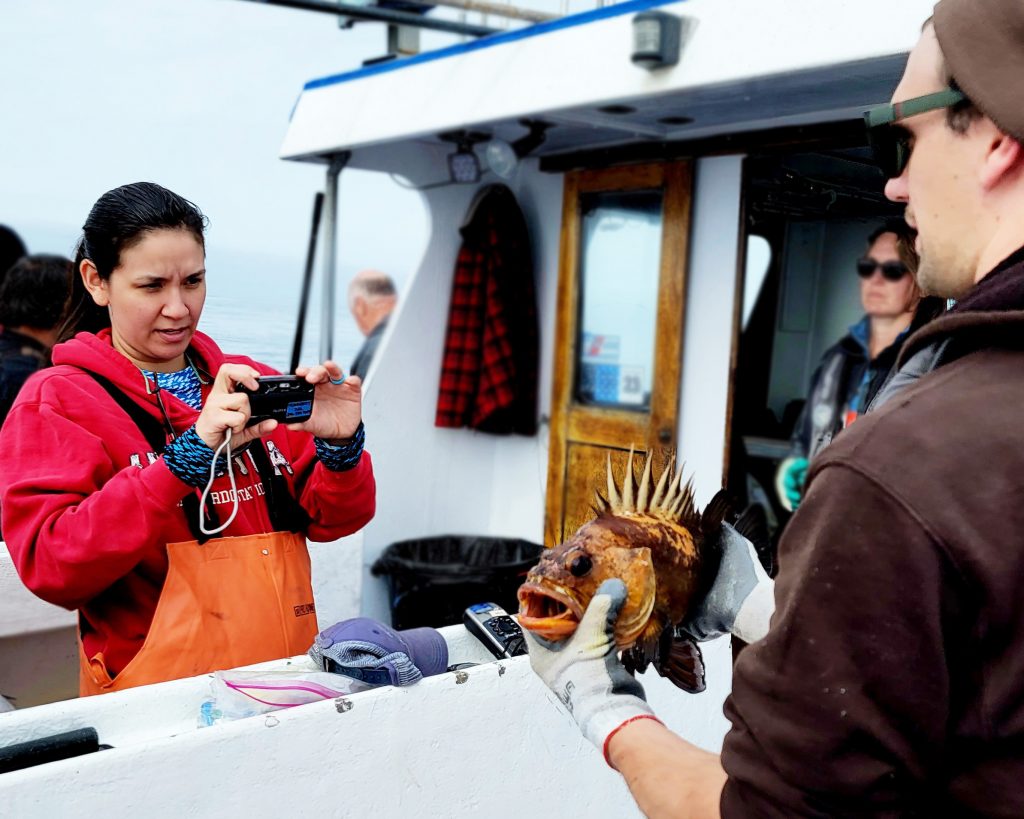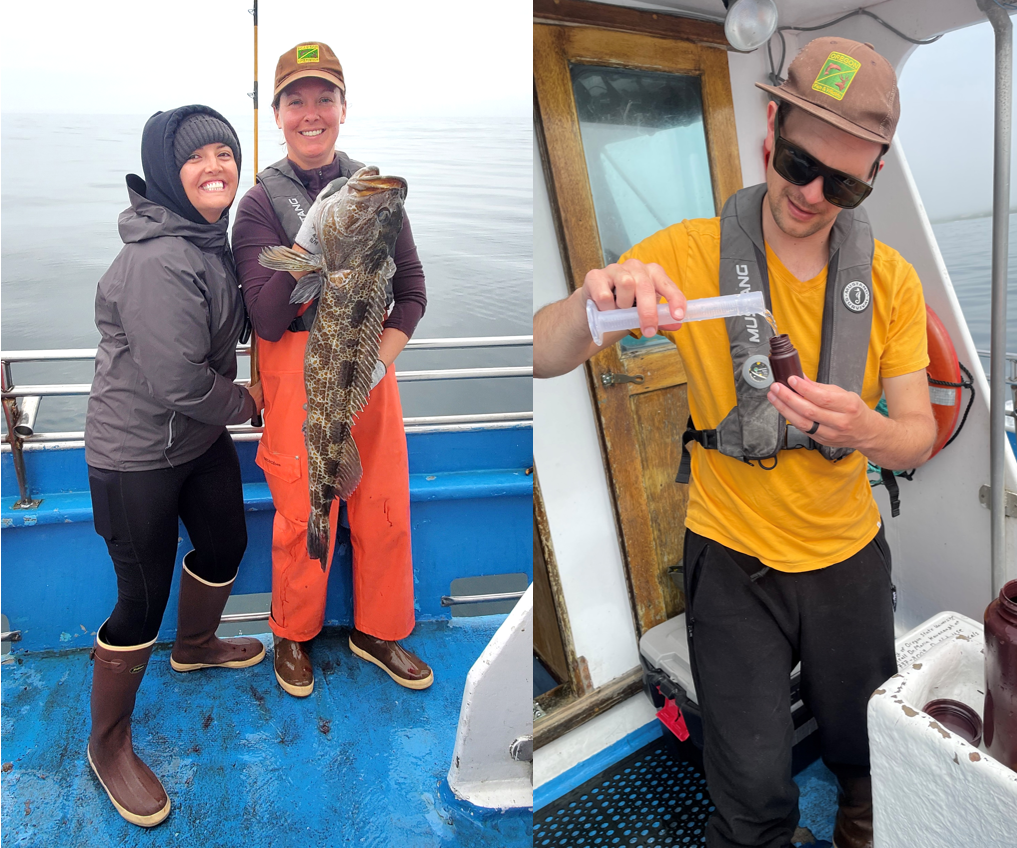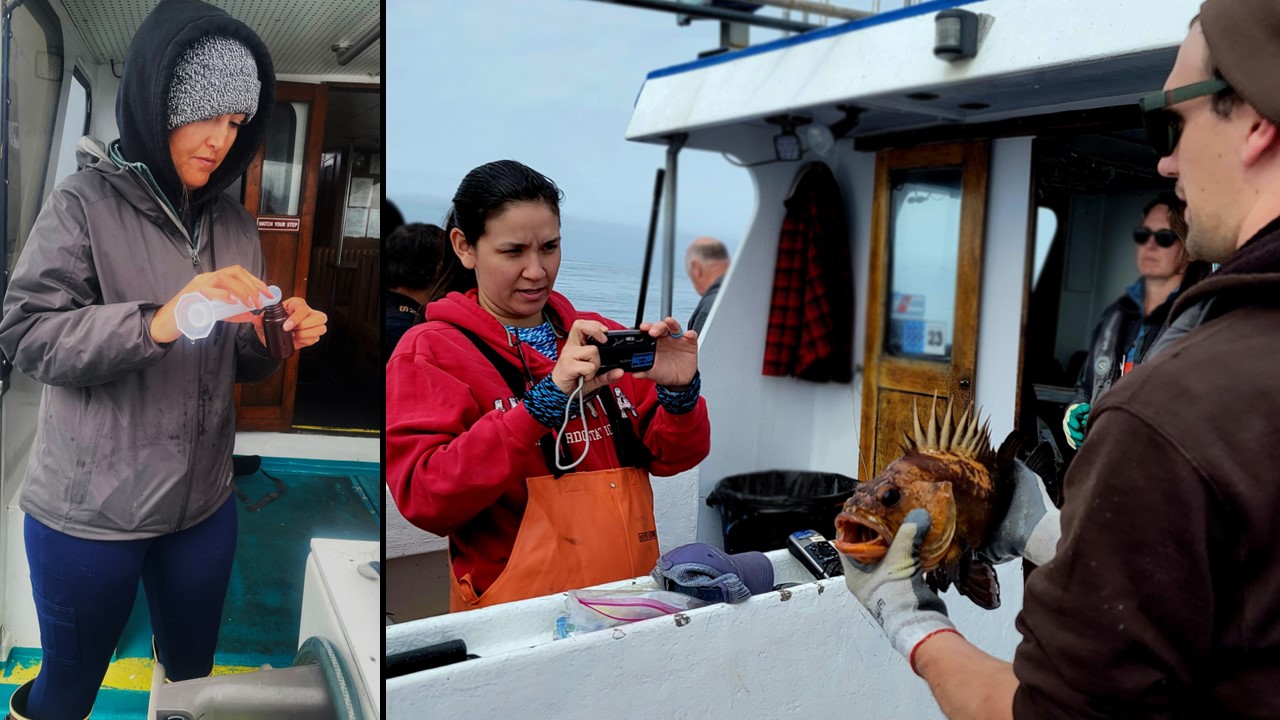ODFW routinely supports new projects with some of the best and brightest graduate students. This summer we worked with graduate students from Oregon State University (OSU) to support two projects: one focused on improving data for management and the second focused on harmful algal blooms and their impacts on fisheries.

Mee-ya Monneedy, a current fisheries science master’s student with Dr. Scott Heppell at OSU, is working to develop alternate forms of electronic monitoring for Oregon’s recreational charter fleet. Her research utilizes stereo-photographs to identify, quantify, and measure recreational catch in Oregon’s nearshore bottomfish fishery and compare it to sampling data collected by ODFW staff’s standard sampling techniques. If stereo images provide an enhanced method for data collection and fishery monitoring, these techniques may be used in the future to benefit and inform fisheries management efforts.

Raquel Gilliland is a graduate student in the Marine Resource Management Program at OSU working with Dr. Maria Kavanaugh to utilize cooperative fisheries research to better understand harmful algal blooms along the Oregon coast. She has collaborated with Newport charter and commercial fishermen to collect surface water samples which will provide insights into the relative abundance of algae that cause harmful algal blooms and potential fisheries shutdowns. Managers can make better-informed decisions by learning more about the seasonal abundance variations and environmental factors contributing to harmful algal blooms.
